The true story of hypancistrus sp. L250
We have been hearing about hypancistrus sp. L250 for a long time. From its mysterious origin to its prohbitive price, it keeps intriguing aquarists. In this article, we will try to explain its exact history, as verified and cross-checked around the world.
It all began in December 1997 when a photo was published in reputed German magazine DATZ. This photo, introduced by Mr. André Werner, reveals to the world a hypancistrus coming directly from the Rio Iriri. Adopted under the name L250, this hypancistrus quickly became the dream of all suction cup lovers. The few words that go along this photo read:
“Jubilee Catfish: The loricariidae catfish shown here, which is undoubtedly a member of the genus Hypancistrus, is native to the Rio Iriri, a large western tributary of the Rio Xingu (Para, Brazil). However, the species affiliation is unclear: are we dealing with an undescribed species or simply a population of Hypancistrus Zebra? Anyway, L250 (that’s how far we’ve come in the meantime!) is certainly one of the most exciting catfish novelties since the importation of such forms as L177 or L200. The Transfish company (Planegg, near Munich) received the animals in June of this year, but the delivery consisted of only eight specimens!”
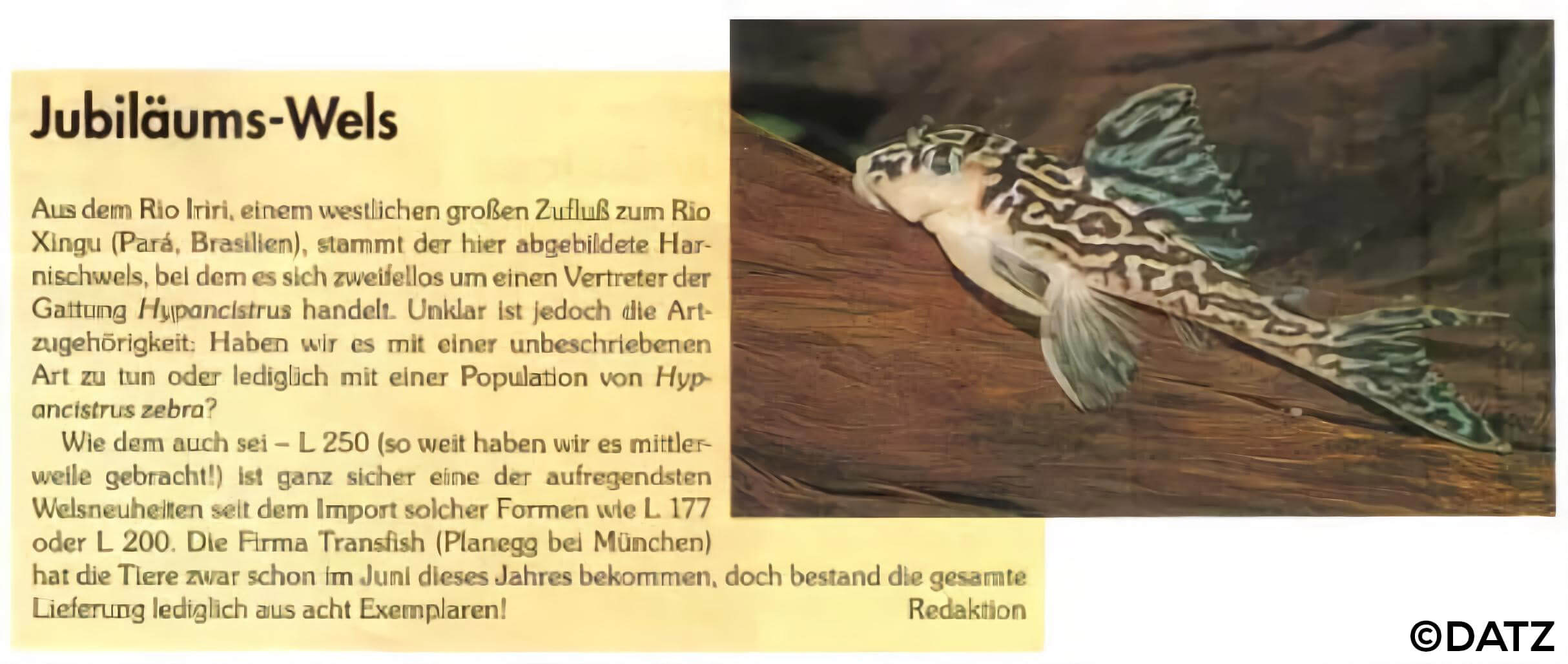
Insert published in 1997 in the December issue of DATZ Aquarium magazine
We therefore learn that the importer Transfish, headed by Mr. Werner, succeeded in obtaining 8 hypancistrus sp. L250 in June 1997. Quickly realizing that the asking price at the time was far too high for the European market, Mr. Werner chose to sell 7 of the 8 L250s to Japan.
Many years later, in 2009, the last L250 was also sold in Japan by this importer who retired at the same time. This last unit was sold to An Aquarium for the modest sum of €4000. This amount shocked many people at the time. In reality, €4000 was too low a price for this type of fish, the only problem was that this fish was already old. When it arrived in Germany in 1997, it was already mature and would have been about 5 years old, which makes it 17 years old in 2009. This fish thus no longer qualified as “spawning”. It is also important to mention that it was “mopskopf” (flat head deformation) as the pictures below can testify. This feature had never been identified before in a wild individual.

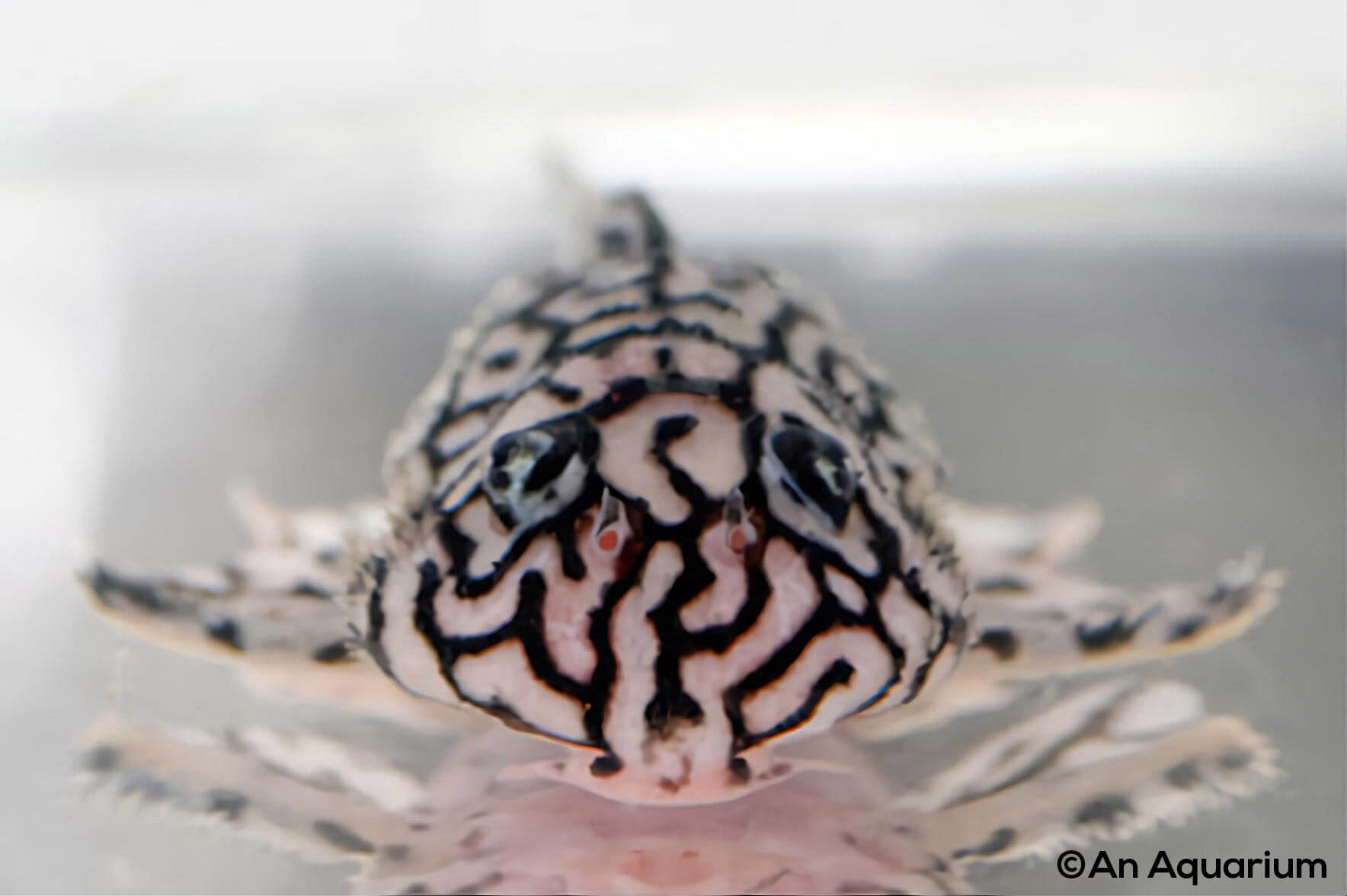
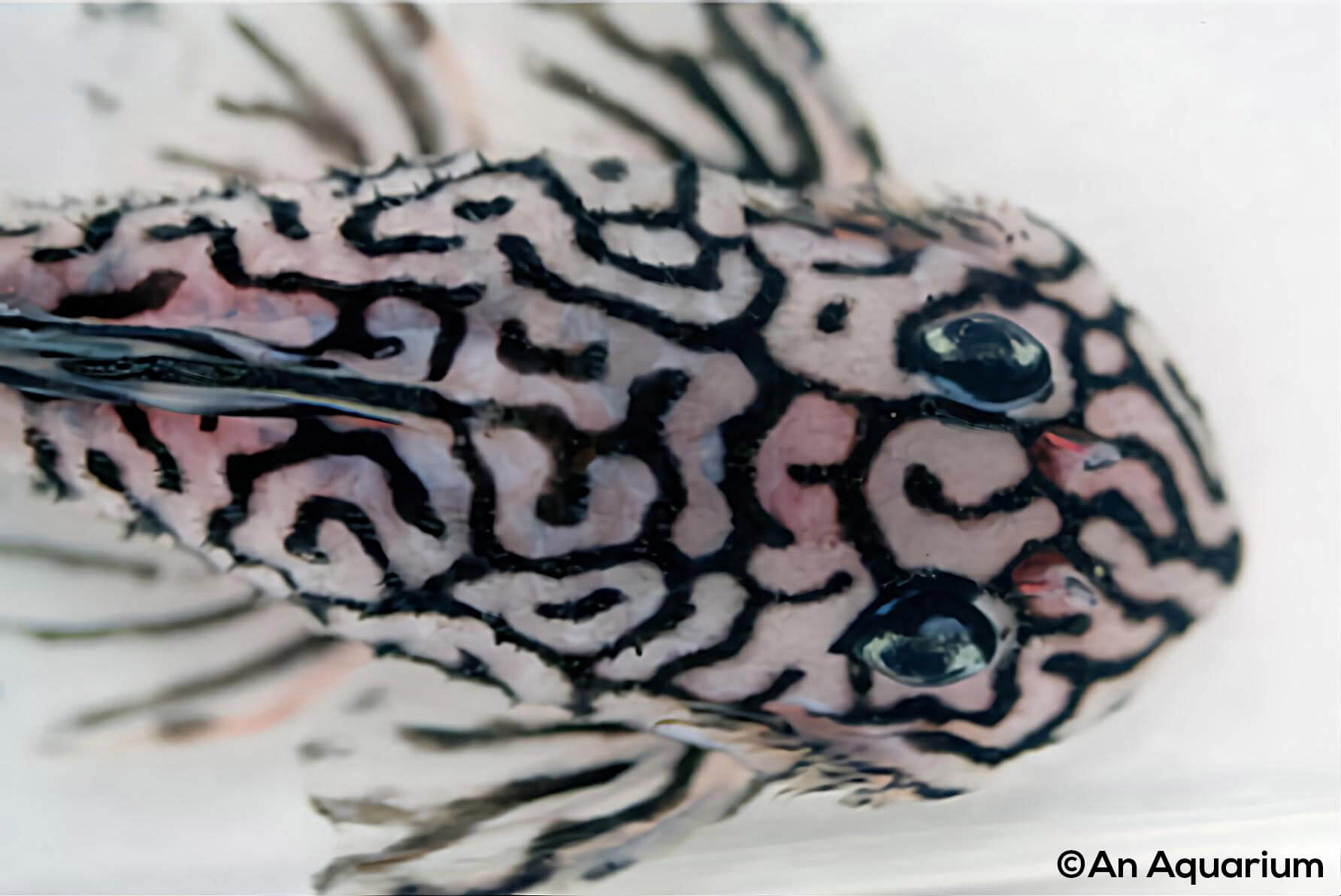
Photographs published in 2009 by An Aquarium on their website.
When Mr. Werner presented the hypancistrus L236 as well as L250, the origin of both species was the Rio Iriri. This led to large and ambitious expeditions to this region over many years. It was finally proven that there was no L236, L250 or even L46 in that area. In the aquarium world, it is common for fishermen to give false information on the location of their catches. This practice allows them to preserve new species from other fishermen and thus increase prices.
Hybrid or mutant? Two conflicting theories…
The first of the two theories would be that L250 came from multiple crosses between hypancistrus, which would have given the 8 specimens that are known.
The second is that hypancistrus sp. L250 is actually a Zebra L46 hypancistrus mutant like L98. This theory is plausible given the strong similarities in the eyes of these two species. In addition, the L250 also has bluish highlights in the fins like the L46. Let’s not forget to mention the hypancistrus L173, which is very close to a non-stable variant of Zebra L46.
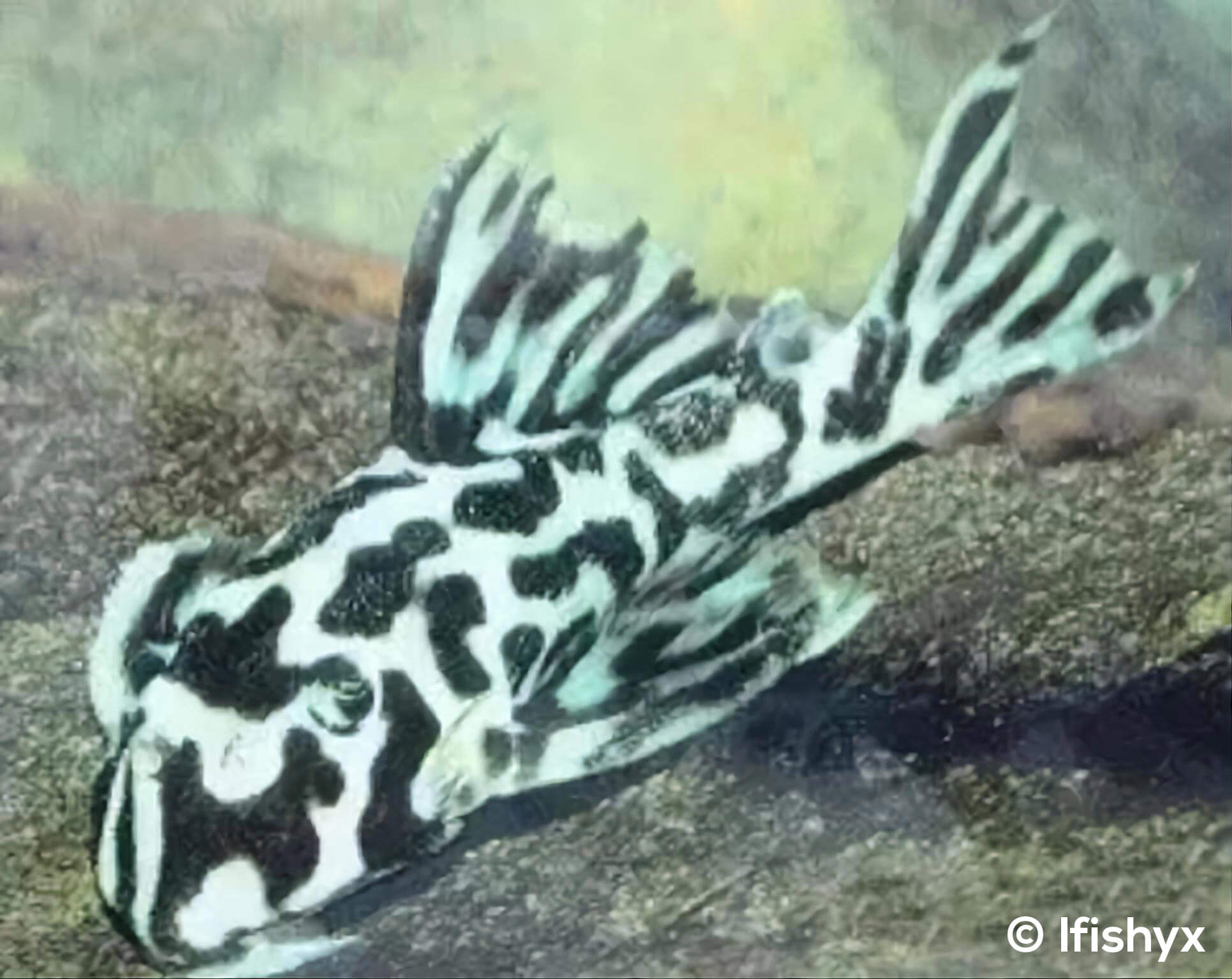
Photograph published in 2016 by Ifishyx on their blog.
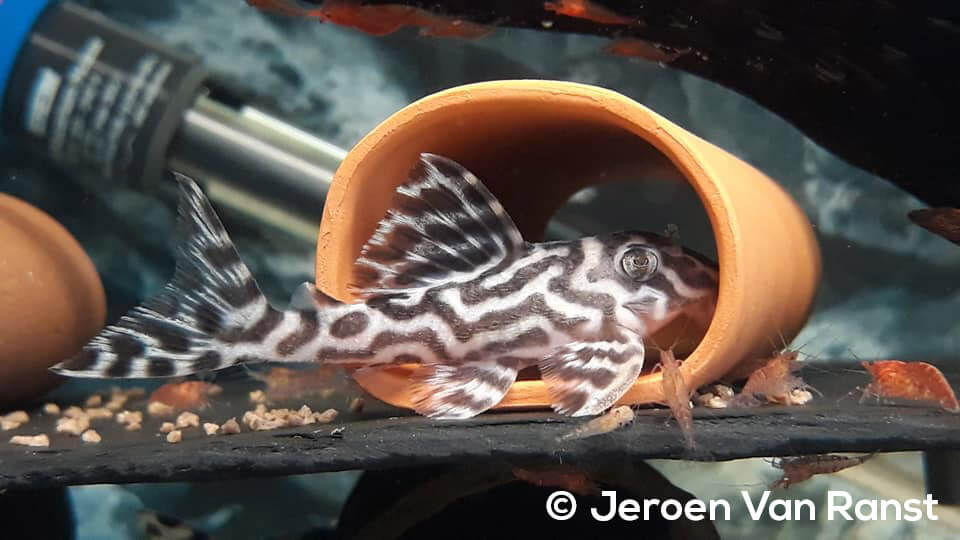
Photograph published in 2021 by Jeroen Van Ranst on Facebook.
Since we never saw another picture of the L250 after the publication of An Aquarium, we were pushed to think that there were no reproductions of the 8 Japanese specimens and that we would never see this variety again. Until, in 2011, a Taiwanese aquarist shared a photograph (which we can’t reveal to you yet for copyright reasons) of an adult fish that strongly resembled the hypancistrus L250.
This fish is believed to be a wild specimen that was imported in 2011 and purchased as a L46 Thin line. The L250 pattern developed once the fish became adult. This photograph calls into question the theory of a hybrid L250 and gives more and more legitimacy to the theory of a mutation of the L46.
It seems that the young from the Zebra hypancistrus reproductions would all look like normal L46s. Does this mean that pattern cannot be passed on? In any case, we have never seen any pictures or articles about L250 juveniles.
We can therefore conclude that the 8 mature individuals that Transfish imported in 1997 were in fact a mutation of the famous hypancistrus zebra L46 that is very rarely caught in the wild.
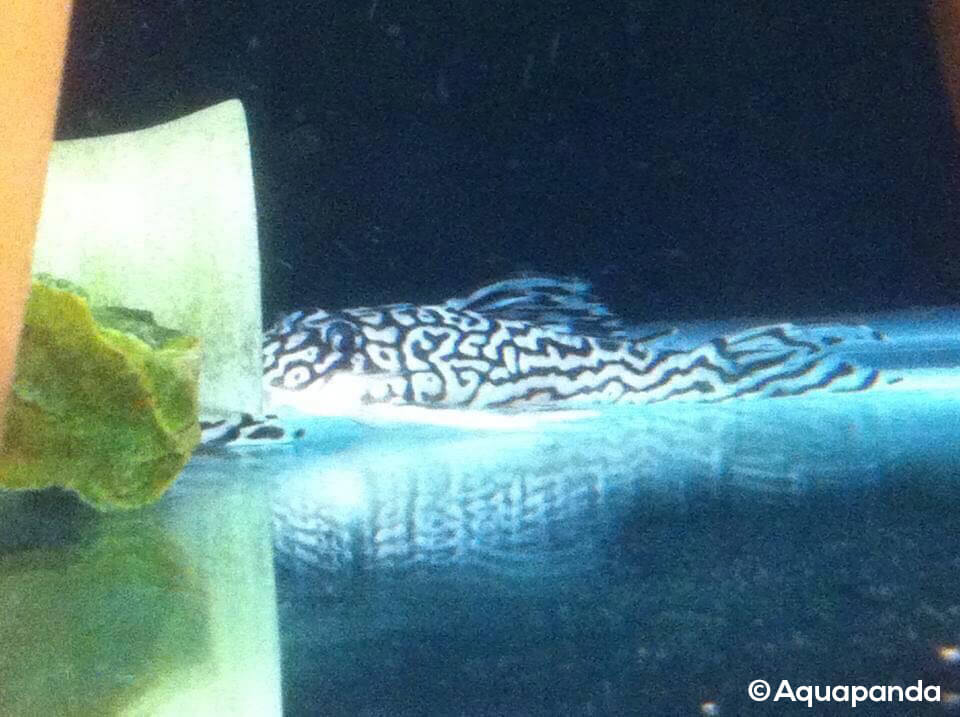
Photograph published in 2015 by AquaPanda on Facebook.
Let’s also mention the great work done for several years by Julia Rajanta of CV Bellenz Fish Farm on a selection of hypancistrus zebra L46 named JR line, very strongly resembling the L250.

Photograph published in 2020 by CV Bellenz on Facebook.
Sources : DATZ Aquarium, AMAZONAS Magazine, Aquapanda, L-welse.com, Felix Guder.

By Amaury Coenart
CEO of the Eggster company and L-numbers breeder.